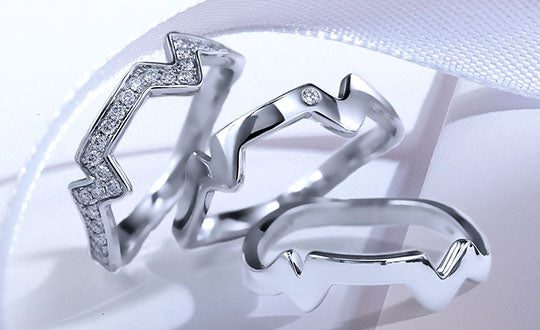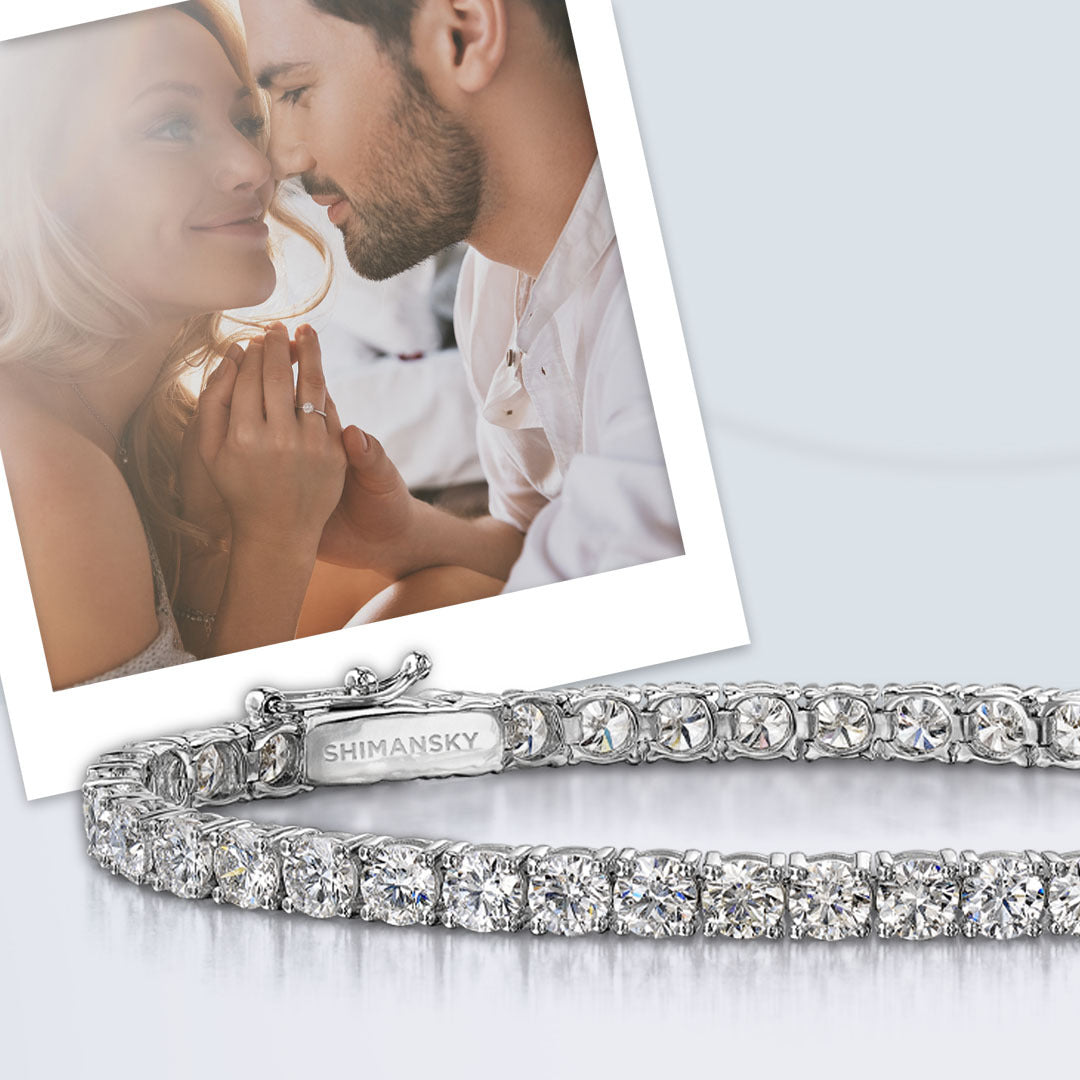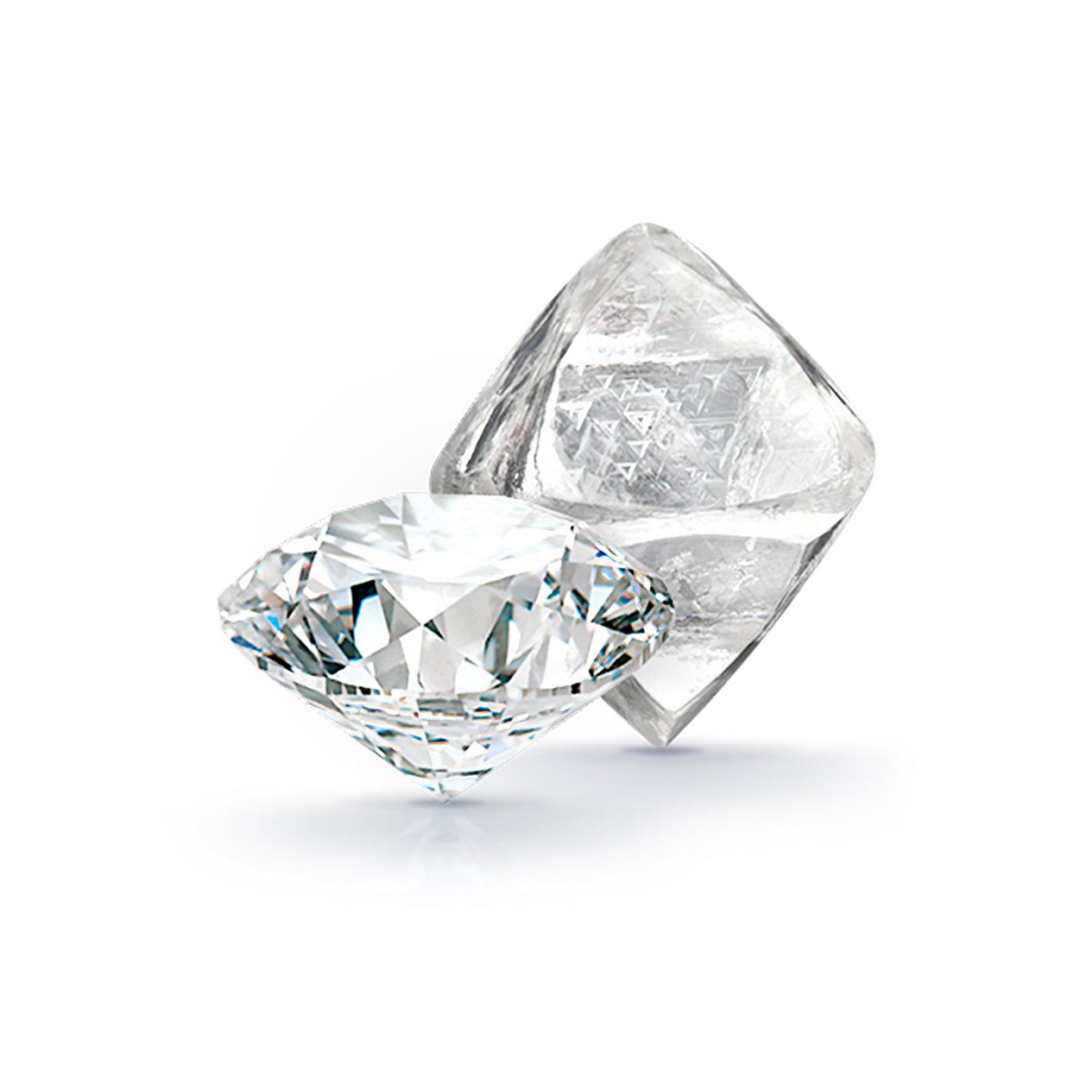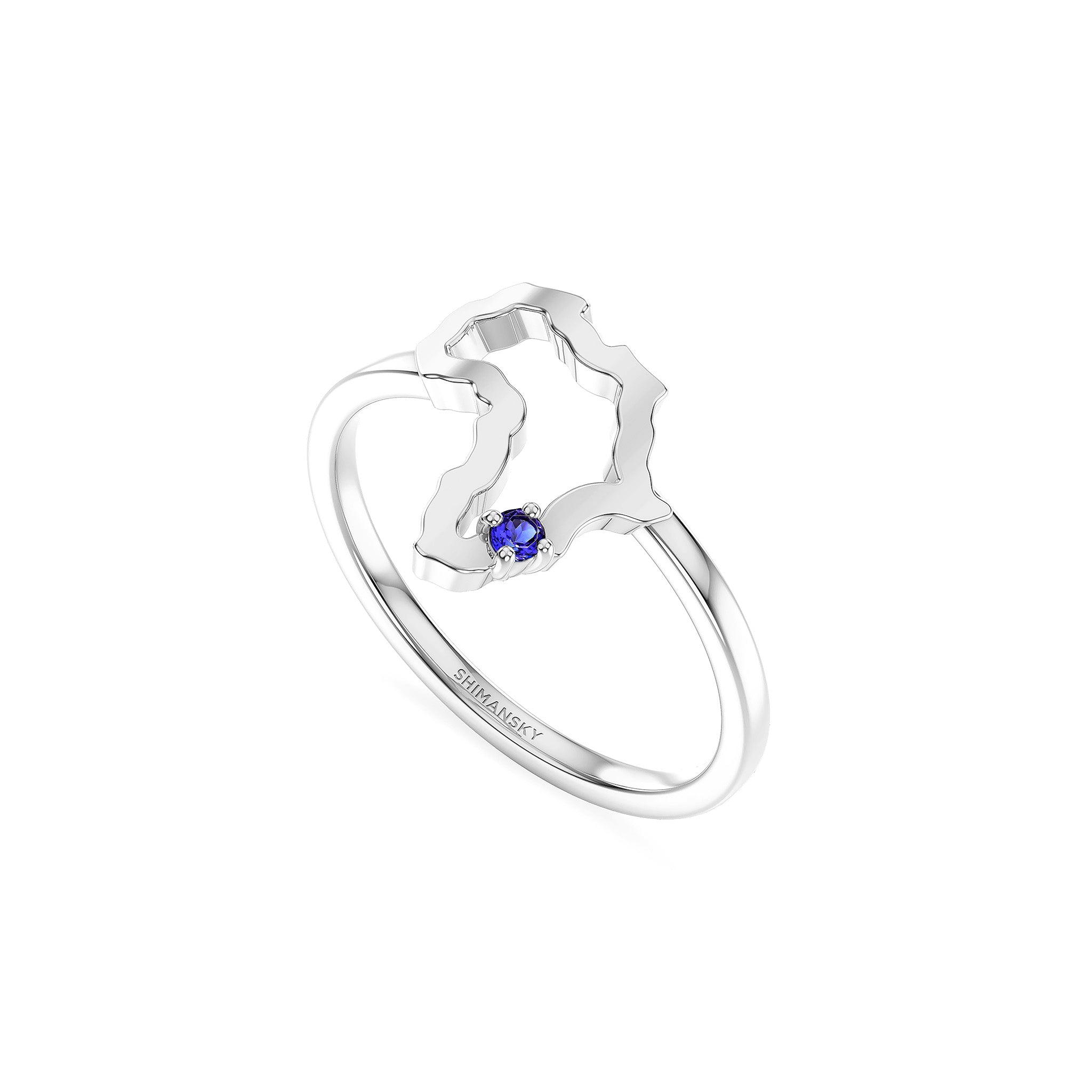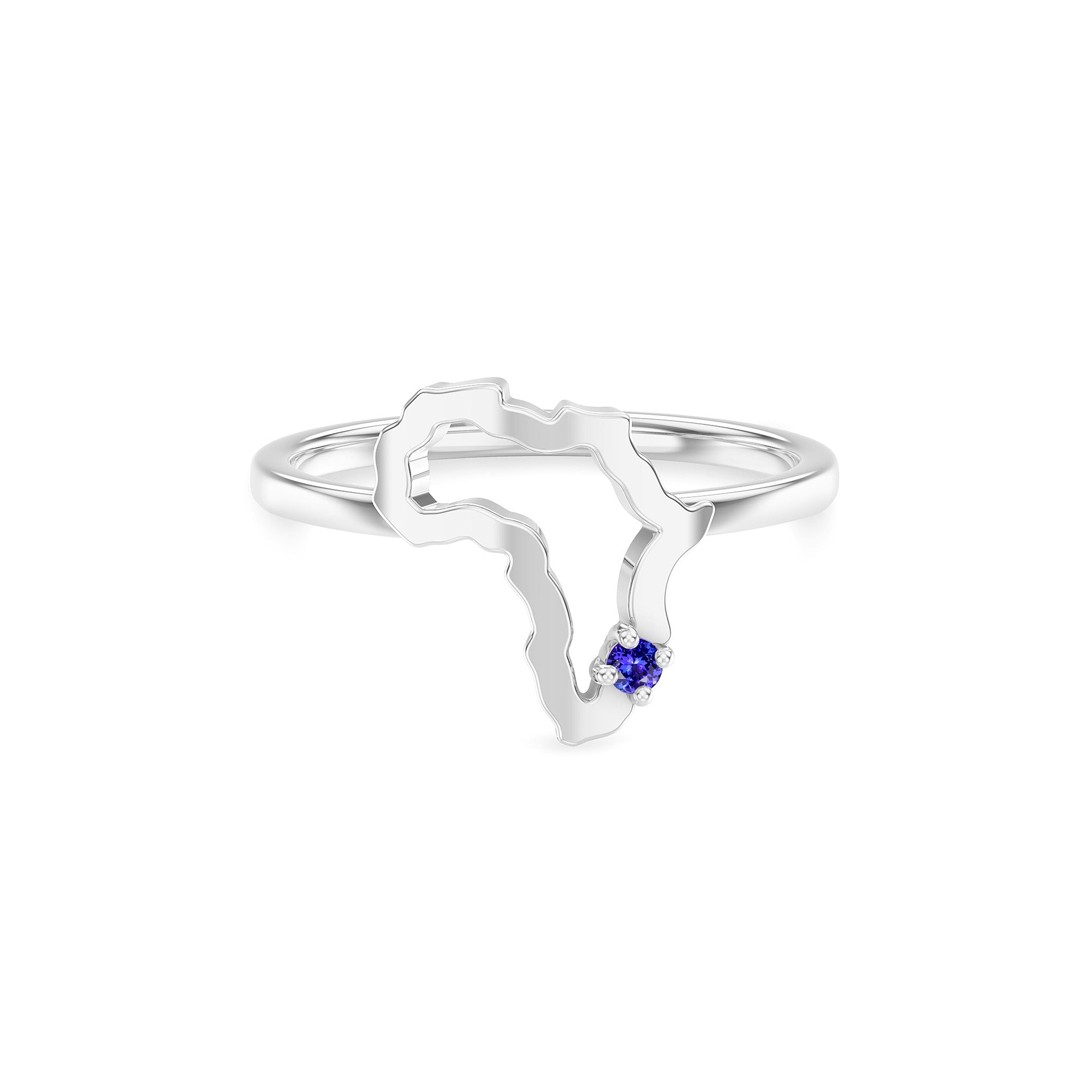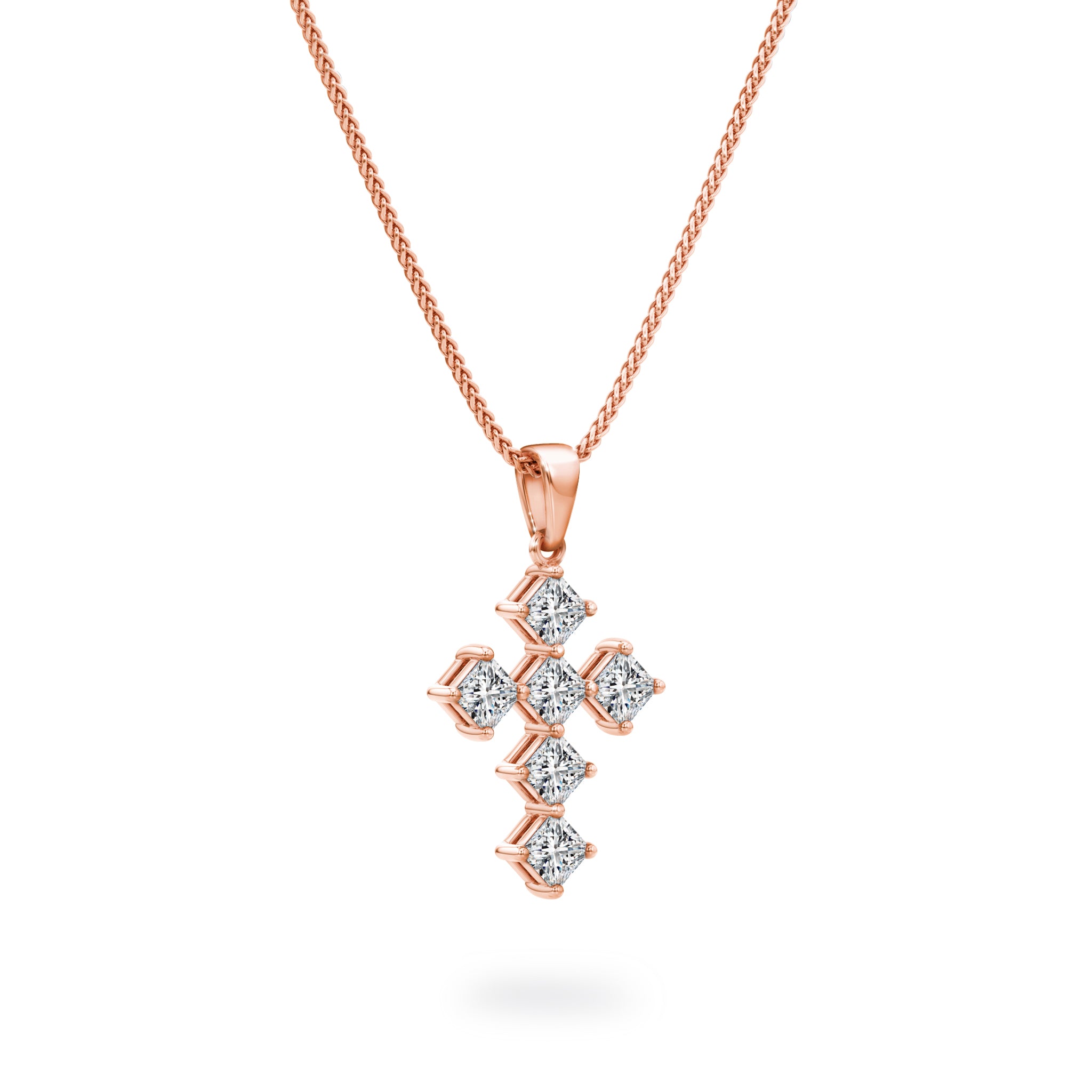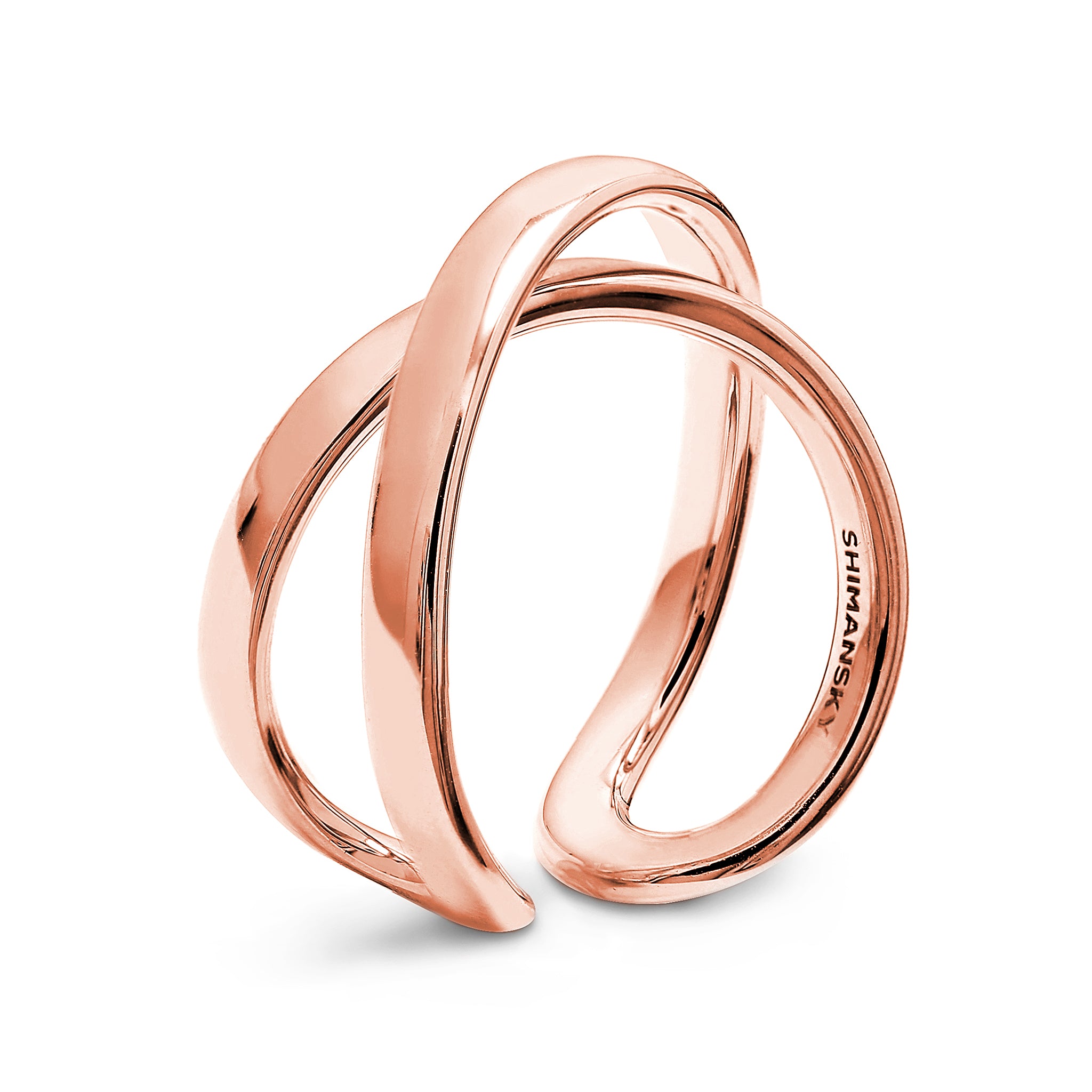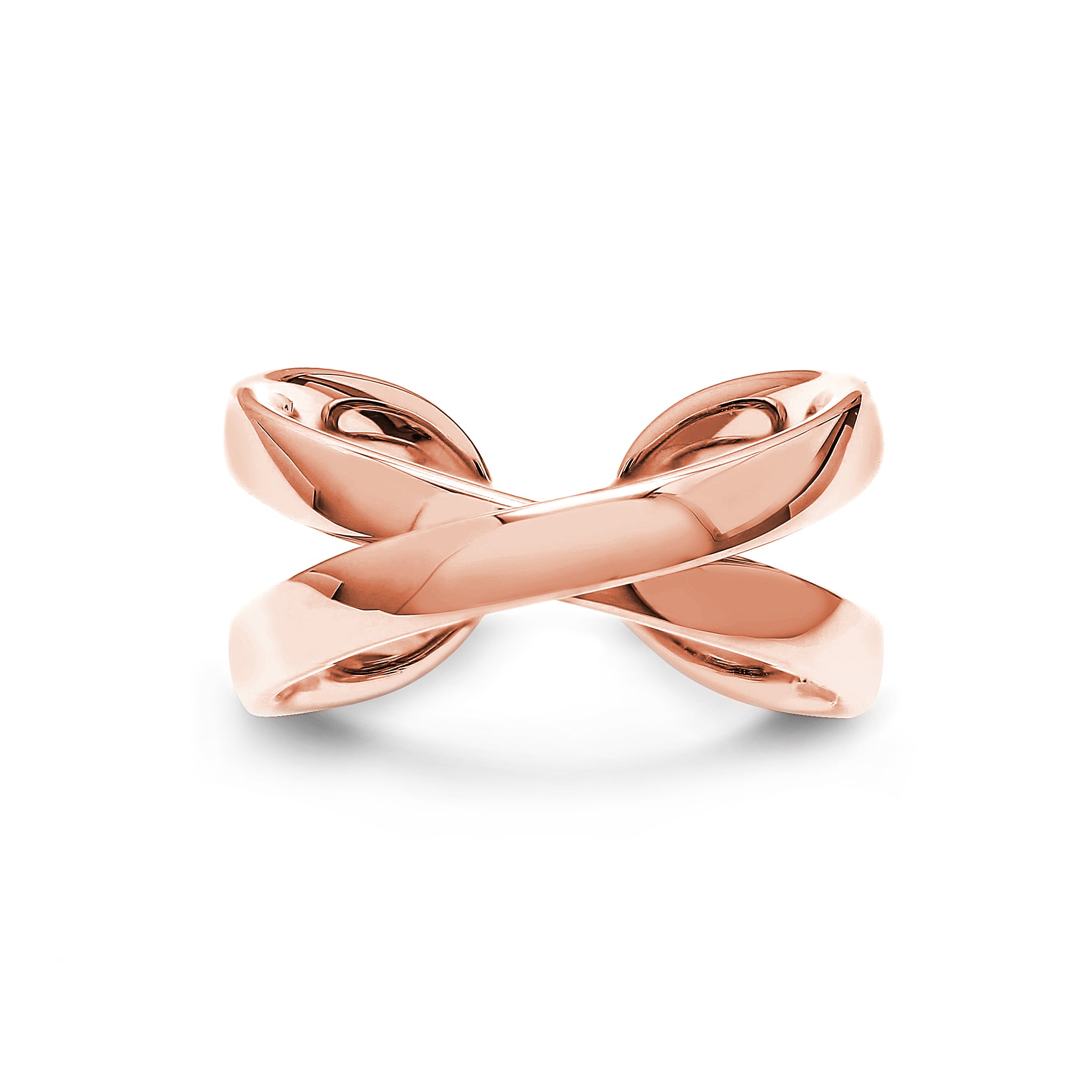詞彙表
珠寶鑽石和寶石指南
B
BAGUETTE - A fancy shape diamond cut with step-cut facets and is rectangular in shape.
BEARDED GIRDLE - Tiny, numerous, hair-like fractures extending from the girdle into the diamond.
BEZEL FACET - On a round brilliant diamond, these are eight large kite-shaped facets on the crown, also called top main facet.
BLEMISH - Refers to damage that occurs on the surface of a diamond, which is an imperfection external to the diamond. For example, a blemish could refer to a nick, knot, scratch, abrasion, minor crack or fissure (cavity), or a poor polish.
BRILLIANCE - Brilliance describes the amount of white light reflected from the facets of a diamond. Brilliance is a combination of lustre, light reflection, colour dispersion and scintillation.
BRILLIANT 10 DIAMOND - A round brilliant cut diamond that is cut to perfect proportions and symmetry, with zero light leakage giving you maximum fire, brilliance and scintillation. When viewed through an ideal scope, a Brilliant 10 diamond will display 10 perfect arrows from above and 10 perfect hearts from below. Brilliant 10 diamonds take 5 times as long to polish as a normal round brilliant cut diamond and less than 25% of the world’s diamond cutters are skilled enough to achieve this perfect balance. Brilliant 10 diamonds are exclusive to Shimansky.
BRILLIANT CUT DIAMOND -
The most common cut usually containing 57 facets (58 if the culet has been polished). Also the most brilliant cut, in terms of most efficient use of light to increase brilliance, fire and scintillation, hence the name.
BRUISE -
Damage consisting of surface crumbling, often accompanied by tiny, root like feathers.
BURN MARK -
Surface clouding caused by excessive heat.
C
CARAT - The standard unit of measurement referring to the weight of a diamond. One carat is equivalent to 200 milligrams, or one-fifth of a gram. The term carat originates from the seed of the Carob tree. In ancient times, before scales and units of mass were invented, diamond traders compared the weight of a diamond to the seeds of the carob tree. Each carob seed had a uniform weight, equal to 200 milligrams and hence determined the weight of the diamond. Learn more about a diamond's carat weight.
CAVITY - A type of inclusion consisting of a large or deep opening in the diamond.
CERTIFIED DIAMOND - A diamond that has been sent to a independent diamond grading laboratory such as the GIA or EGL. Such a diamond will always be sold with its unique diamond certificate.
CLARITY - Refers to the incidence of inclusions (internal imperfections) and blemishes (external imperfections). Clarity is graded on a scale from Flawless (FL) to Imperfect (I), and the size, number, position, nature and colour of these imperfections determine the clarity grade and greatly affect the value the diamond. Learn more about the diamond clarity grading here.
CLAWS - The actual metal that holds a diamond or gemstone in place. Also known as prongs. Typical settings feature 4 or 6 claws or prongs.
CLEAVAGE - The tendency of a crystalline mineral to break in certain definite directions called cleavage planes. A cleavage may be caused by inherent internal strain or by a sharp blow. The break may extend to the surface of a diamond.
CLOUD - A group of minute white inclusions too small to be distinguishable from another that gives a cloudy or milky appearance inside the diamond.
COLOUR - Grading the colour of a diamond involves deciding how closely a diamond's colour appears to be colourless. The colour of a diamond is ranked on a scale from ‘D' to ‘Z', where ‘D' is colourless and ‘Z' has a noticeable tint of colour, typically yellow. Most diamonds have a trace of yellow or brown. With the exception of some natural fancy colours, such as blue, pink, purple, or red, the colourless grade is the most rare and hence the most valuable. Learn more about a diamond's colour grading here.
CROWN - The upper part of the diamond just above the girdle. It consists of a large flat area on the top of the diamond known as the table, and several crown facets below it.
CROWN ANGLE - The angle measured between the girdle plane and the bezel facets. Along with the table size, the crown angle helps determine the amount of dispersion displayed by the diamond.
CROWN HEIGHT - The part of the diamond that is above the girdle.
CROWN HEIGHT PERCENTAGE - The crown height expressed as a percentage of the average girdle diameter.
CRYSTAL - A type of inclusion. A crystal is a mineral deposit trapped inside the diamond, and can vary in colour.
CULET - The smallest facet at the bottom of a full-cut diamond, resembling a sharp point or tip at the bottom of the pavilion on a faceted diamond. When the culet is polished, it adds an extra facet to the diamond, i.e.: a normal round brilliant cut diamond has 57 facets if the culet is not polished and 58 facets if the culet is polished.
CUSHION CUT - A fancy shape diamond cut with rounded edges and sides, no sharp points. The shape of the cushion cut resembles a pillow or cushion, hence its name.
CUT - Also known as the make. The cut of a diamond refers to the proportions given to the polished diamond by the diamond cutter. Proportions are the size and angle relationships between the facets and different parts of the diamond. Cut affects both the weight yield from a rough diamond and the optical efficiency of the polished diamond. It is the most important of the 5Cs in determining the diamond's overall fire, brilliance and scintillation. Learn more about a diamond's cut grade here.
D
DEPTH The distance between the table (top) and the culet (bottom) of a diamond or gemstone as measured in millimetres.
DEPTH PERCENTAGE The depth of the diamond or gemstone divided by the average width. The depth percentage is key to creating brilliance and fire in a diamond. If the depth percentage is too low or too high light will leak out of the sides of the diamond, resulting in a loss of sparkle.
DIAMOND CERTIFICATE A formal document detailing a diamond’s unique characteristics, especially it’s cut, carat weight, colour and clarity, and may also include its finish (polish and symmetry), fluorescence and additional comments. A diamond certificate is issued by an independent laboratory such as the GIA or EGL. These certificates are numbered and are unique to each and every certified diamond. Learn more about the importance of diamond certification and how to read a diamond certificate.
DISPERSION The display of spectral colours emanating from a diamond as white light is broken-up when it enters the diamond.
E
EGL - European Gemological Laboratory (EGL) is an independent international diamond grading laboratory responsible for certifying diamonds based on the 4Cs (cut, colour, clarity and carat weight). Learn more about the EGL and other diamond certification laboratories here.
EIGHT HEARTS DIAMOND - A round brilliant cut diamond that is cut to perfect proportions and symmetry. When viewed through an ideal scope, an Eight Hearts diamond will display 8 perfect arrows from above and 8 perfect hearts from below. Eight Hearts Diamond takes three times as long to polish as a normal round brilliant cut diamond and it is said that only one in a thousand diamond cutters and polishers is skilled enough to achieve this perfect balance. Eight Hearts diamonds are exclusive to Shimansky. Learn more about the Eight Hearts diamond cut here.
EMERALD CUT - A diamond shape that has a step cut and is usually rectangular in shape with cut corners.
EXCELLENT CUT - Refers to the proportions of a diamond’s cut. If ideal proportions and symmetry is achieved, the diamond cut will be graded as excellent meaning that there is maximum fire, brilliance and scintillation.
EYE-CLEAN - In clarity grading, an eye-clean diamond has no inclusions that are visible to the naked eye. In other words, the diamond will appear flawless to the naked eye. Diamonds that generally have a clarity higher than SI1 will appear to be eye-clean from inclusions.
F
FACET - The polished planes on the surface of a diamond that gives the finished diamond its shape. The degree and amount of light that reflects from these facets gives a diamond its brilliance and sparkle.
FACETED DIAMOND - A diamond that has transformed from rough into a polished stone with all of its facets.
FANCY SHAPED DIAMONDS - FANCY CUTS Diamonds that are cut into any shape, other than round, are considered fancy shaped diamonds and typically have a lower cost per carat. Examples of fancy shape diamonds are Princess, My Girl, Emerald, Square Emerald, Cushion, Radiant, Oval, Pear, Marquise, Heart etc.
FEATHER - A type of inclusion or break in a diamond that looks like a white feather. The presence of a feather is noted in the clarity grade of a diamond.
FINISH - Also known as the polish and symmetry of the diamond. The finish refers to exterior of the diamond.
FIRE - Fire refers to flashes of light seen from within a diamond resulting from dispersion. Diamonds that are cut to very good or excellent proportions will display a higher degree of fire.
FLAW - An imperfection within a diamond. Flaws are noted in the clarity grade.
FLUORESCENCE - The degree of luminescence exhibited in certain diamonds when exposed to ultraviolet light or strong sunlight. Most commonly, diamonds fluoresce blue in colour, but can also be a variety of other colours. Faint to medium fluorescence is rarely detected under ordinary lighting conditions. Strong or very strong fluorescence may make a diamond appear ‘milky’ or ‘oily’. Fluorescence is not always a bad thing as blue fluorescence may enhance the colour of diamonds graded ‘H’ in colour or below (I,J, etc.) by hiding their slight yellow tint.
FRACTURE - A crack or break on a diamond's surface.
G
GIA - Gemological Institute of America (GIA) is a well respected independent, international grading laboratory responsible for the grading of diamonds. Many of the world’s most precious diamonds and gemstones are graded by the GIA Learn more about the GIA and other diamond grading laboratories here
GIRDLE - The narrow band around the widest part of the diamond or gemstone. The girdle can be faceted, polished or unpolished. The girdle on a Shimansky certified diamond is usually laser inscribed with the diamonds certificate number and details in letters no bigger than a few micron.
GIRDLE THICKNESS - The measurement describing the percentage of the diamond's average girdle diameter. The descriptions of girdle thickness range from extremely thin, thin, medium, slightly thick, thick and extremely thick.
GOLD - A precious metal widely used in the jewellery trade. Gold has the longest and most storied history of all precious metals. Gold in jewellery terms is expressed in karats (abbreviated in K or KT). Pure gold is 24K and is very soft in nature. 18K gold contains 75% gold and 25% other metals to make it stronger and more suitable for every day wear in jewellery.
GRADING REPORT - A formal document detailing a diamond’s unique characteristics, especially it’s cut, carat weight, colour and clarity, and may also include its finish (polish and symmetry), fluorescence and additional comments. A diamond certificate is issued by an independent laboratory such as the GIA or EGL. These certificates are numbered and are unique to each and every certified diamond. Learn more about the importance of diamond certification and how to read a diamond certificate.
H
HARDNESS - Refers to a diamond or gemstone’s resistance to scratching. A diamond is the hardest mineral known to man.
HEARTS AND ARROWS - A general term used when referring to diamonds with a precise and complete pattern of hearts and arrows achieved by perfect proportions and symmetry in a diamond’s cut. When viewing a diamond from the top, it shows an arrows pattern and when viewed from the bottom you’ll see a series of hearts. A true Hearts and Arrows diamond must have all patterns visible at a single glance; this indicates the diamond has optically perfect symmetrical. Learn about the exclusive Brilliant 10 andEight Hearts diamonds.
HEART SHAPE - A type of fancy cut diamond that resembles the shape of a heart.
I
IDEAL CUT - Generally used to describe a round brilliant cut that is cut to perfect proportions and symmetry. To achieve an Ideal Cut, the following range must be met:
Table Diameter: 52.4% to 57.5%
Crown Angle: 33.7 degrees to 35.8 degrees
Girdle Thickness: Thin to Slightly Thick (.51% to 2.95%)
Pavilion Angle: 40.2 degrees to 41.25 degreesr
Culet: None (Pointed) to Medium” Total Depth: 56.88% to 63.92%
INCLUSION - A natural imperfection in a diamond which affects the clarity grade of the stone. Examples of inclusions found in diamonds are feathers, crystals, needles, clouds and pinpoints.
INTERNAL GRAINING - Indications of irregular crystal growth inside a diamond or gemstone. These can look milky, resemble weak lines or lines, have color or be reflective.
L
LENGTH TO WIDTH RATIO - A comparison of the length and width of the girdle outline on fancy-shaped diamonds. The ratio is found by dividing the length of the diamond by the width. The width is always stated as 1. Some length to width ratios are considered to be more appealing than others, but this is a matter of personal preference.
Pear 1.50 - 1.75 : 1
Marquise 1.75 - 2.25 : 1
Heart 0.98 - 1.02 : 1
Oval 1.33 - 1.66 : 1
Emerald 1.50 - 1.75 : 1
Radiant/Princess 0.95 - 1.05 : 1
LIGHT LEAKAGE - The amount of light lost through a diamond when it has not been cut to perfect proportion and symmetry. If the diamond cut is too shallow or too deep, light that is refracted within the stone will seep through the sides resulting in a loss of brilliance and sparkle. Diamonds with a zero light leakage such as the Brilliant 10, will display a higher degree of fire, brilliance and scintillation. In effect, this means that light that enters the diamond will be refracted within the stone and then reflected back through the top again.
LOUPE - A small magnifying lens used to examine diamonds. 10x magnification is the standard measurement tool for determining the clarity of a diamond.
LOWER-GIRDLE FACET - The facets on the pavilion of a round brilliant cut found just below the girdle.
M
MARQUISE - A type of fancy shape diamond, which is elongated with points at each end.
MELEE - A term used primarily to describe small, round faceted diamonds of approximately .18 carat or less.
MINE CUT DIAMOND - An early form of the brilliant diamond with a squarish-shaped girdle, high crown, small table, deep pavilion, and very large culet.
MOHS SCALE OF HARDNESS - The 10-point scale of mineral hardness. On the Mohs scale of relative hardness, a diamond is rated as 10 meaning that it is the hardest mineral known to man. Only a mineral of the same hardness grade can scratch the mineral. Sapphires for example are graded as 9 on the Moh’s scale of hardness which means that only another Sapphire or a diamond (because a diamond is harder) can scratch a Sapphire. Yet, Sapphires cannot scratch a diamond because they are softer.
MOHS 10-POINT SCALE OF MINERAL HARDNESS TABLE. -
Hardness (from hard to soft)
10 - Diamond
9 - Corundum, Sapphire and Ruby
8 - Emerald, Aquamarine, Topaz, Beryl and Hardened Steel
7 - Quartz, Amethyst, Citrine and Agate
6.5 - Tanzanite, Steel file, Iron Pyrite, Glass and Vitreous Pure Silica
6 - Orthoclase, Titanium and Spectrolite
5 - Apatite
4.5 - Platinum and Iron
4 - Fluorite
3 Calcite and Copper Coin
2.5 - Pure 24K Gold, Silver and Aluminium
2 - Gypsum
1 - Talc
MOUNT - An item of jewellery which is ready to have the center / main diamond or gemstone set into.
MY GIRL - A unique eight-sided square diamond cut that reflects light from every angle. The My Girl diamond cut was developed by Shimansky after three years of research and development into specific light dispersion and holds an international patent for its cut and design. It’s a world first and exclusive to Shimansky. Learn more about the My Girl diamond View the My Girl diamond jewellery collection.
O
OVAL SHAPE - A type of fancy shape diamond, which is essentially an elongated version of a round cut.
P
PAVE - A pave or pavé (pronounced pah-vay) setting is a diamond or gemstone setting in which multiple small stones are set close together and very close to the surface of a piece of jewellery, making it look like as though the jewellery has been paved in gemstones.
PAVILION - The area of the diamond below the girdle measuring to the culet.
PAVILION ANGLE - The angle measured between the girdle and the pavilion main facet.
PAVILION MAIN FACET - The eight facets found on the pavilion of a round brilliant diamond.
PEAR SHAPE - A type of fancy shape diamond that resembles a teardrop. One edge is rounded, much like an Oval Shape and the opposite edge has a sharp point, much like a Marquise Shape.
PINPOINTS - Very small inclusions in a diamond that affect the clarity grade. A cluster of pinpoints can form a cloud.
PLATINUM - A precious metal that is more rare, more pure and stronger than gold.
POINTS - A measurement in the weight of a diamond equal to 1/100 of a carat. For example, a 0.20ct is equal to 20 points.
POLISH - The way the cutter finishes the facets on a diamond. Laboratories grade polish from excellent to poor.
PRINCESS CUT - A type of fancy shape diamond that is square in shape with four pointed corners.
PRONGS - The actual metal that holds a diamond or gemstone in place. Also known as claws. Typical settings feature 4 or 6 claws or prongs.
PROPORTIONS - The term 'proportion' refers to the relationship between the angles of the facets of the crown and pavilion polished on a diamond or gemstone. Obtaining perfect proportion is very important in order to maximise fire, brilliance and scintillation so that the right amount of light enters the stone, is refracted within the stone and reflected back through the top of the stone.
R
RADIANT CUT - A type of brilliant cut fancy shape that resembles a square or rectangle shape with the corners cut off.
REFRACTION - The change in direction of a ray of light as it enters the diamond or gemstone and is bounced from facet to facet.
RHODIUM PLATING - White gold is typically rhodium plated when sold so that it resembles the white colour of platinum. With prolonged wear and acidic levels in skin, white gold may lose its rhodium plating and look slightly yellow in colour. Shimansky is able to re-rhodium plate your jewellery piece for you.
ROUGH - Refers to a diamond as it comes out of ground before it is cut and polished.
ROUGH GIRDLE - A grainy or pitted girdle surface, often with nicks.
ROUND BRILLIANT CUT - See Brilliant Cut Diamond.
S
SCINTILLATION - The amount of reflected light from a diamond visible when it moves. Also known as sparkle.
SHAPE - Commonly mistaken for cut in the 4C’s but not the same. Cut refers to the finish (proportions and symmetry of a diamond or gemstone), while shape refers to its actual shape whether it is round, square, princess, radiant, cushion, emerald, square emerald, marquise, pear, oval or heart.
STAR FACET - One of the eight triangular facets found on the upper crown section, next to the table, of a round brilliant cut diamond.
SYMMETRY - The overall uniformity to the arrangement of the facets and polished angles of a diamond or gemstone, created when transforming a diamond from its rough state to a polished stone. Symmetrical grading ranges from excellent to poor. Excellent symmetry of a well cut and well proportioned diamond or gemstone will display a higher degree of fire, brilliance and scintillation. While poor symmetry will result in a loss of light and sparkle performance.
T
TABLE - The largest facet which is polished on the top of a diamond or gemstone. This horizontal facet is where most of the light enters and exits a diamond.
TABLE PERCENTAGE -
The width of the table divided by the average diameter. If the table facet is too large or too small, it will often indicate poor proportions overall.
TCW -
Total carat weight.
U
UPPER-GIRDLE FACET - One of the 15 facets found on the lower crown portion of the diamond, just above the girdle.
V
VALUATION CERTIFICATE - A written estimate of the approximate retail replacement value of the item described. A valuation certificate can be used for insurance purposes and should be updated every two years to keep the value current. Also known as an appraisal.
W
WHITE GOLD - A precious metal that is made up of gold, which in its natural form is yellow in colour, and is alloyed with other metals such as iridium and palladium. The finished product is then rhodium plated to make it look as close to platinum as possible.
所有珠寶
店鋪

